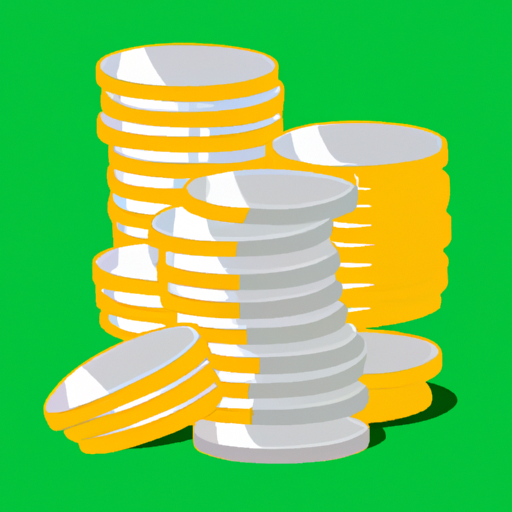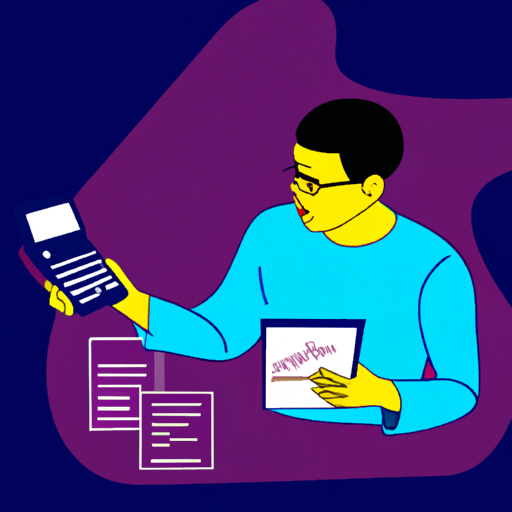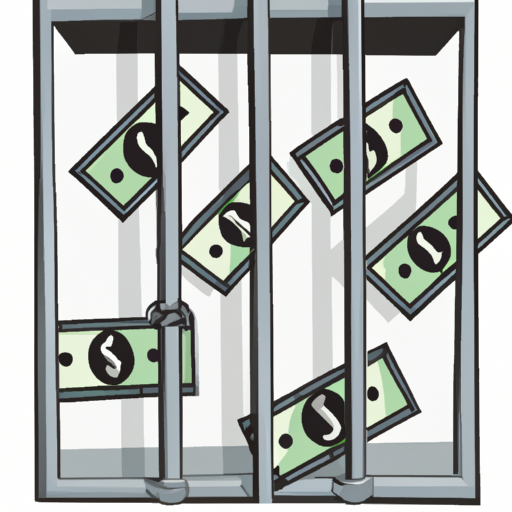Understanding the Benefits of an Emergency Fund
Having an emergency fund in place can be one of the most important steps to prepare for the unexpected. A good emergency fund should be able to provide financial protection and security when life throws you a curveball, whether it’s an unexpected job loss, medical emergency, or major home repair. In today’s world, it’s essential to have a financial safety net in place, in case of any emergency, and an emergency fund can be a great way to achieve that.
An emergency fund can provide a sense of security and peace of mind, which can be invaluable in times of need. Knowing that you have money set aside for an emergency can give you the freedom to relax and not worry about a sudden financial burden. It can also help you to avoid going into debt, as you won’t have to rely on credit cards or loans to cover unexpected expenses.
Building an emergency fund is easy if you plan and set aside a small amount of money each month. Start with a goal of saving between three and six months’ worth of living expenses. This way, you will have enough money saved to cover your basic needs in the event of an emergency. Put this money into a high-interest savings account so that it earns interest and grows over time.
Once you have your emergency fund in place, it’s important to remember to replenish it whenever you use it. It’s also a good idea to review your emergency fund regularly and adjust your savings as needed to ensure you are always prepared.
In addition to providing a financial cushion in times of need, having an emergency fund can also help you to better manage your finances. It can help you to stay on top of your monthly expenses, as you’ll know you have a cushion in case of any unexpected bills or expenses. It can also help you to achieve other financial goals, such as saving for a home or retirement.
Overall, having an emergency fund in place is an essential part of preparing for the unexpected. It can provide a financial safety net and peace of mind in the event of an emergency. It can also help you to better manage your finances and achieve other financial goals. So, if you want to be prepared for anything that life throws your way, make sure you have an emergency fund in place.

Creating a Savings Plan
Having an emergency fund is a crucial part of financial security and preparedness, and creating a savings plan is an important step in building an emergency fund. A savings plan is a simple way to save money regularly, and it should be tailored to fit your financial goals and lifestyle. With the right plan, you can ensure that you have enough money to cover unexpected expenses and financial emergencies.
The first step in creating a savings plan is to determine how much money you can set aside each month. Consider your income, expenses, and financial goals, and then decide how much money you can commit to saving. It may be tempting to save as much as possible, but make sure you’re still able to cover your everyday expenses and pay your bills on time. Once you’ve decided how much you can set aside, it’s important to stick to your budget and make sure you’re saving.
Next, you’ll need to decide where to keep your savings. A high-yield savings account is ideal, as it offers a higher rate of return than a traditional savings account. Look for accounts that have low fees and are FDIC-insured, so you know your money is safe. You may also want to consider a money market account, as it offers more flexibility than a savings account, and you can access your funds more quickly.
When creating a savings plan, it’s important to set goals for yourself. Set a goal for how much money you want to save, and determine how long it will take you to reach your goal. This will help keep you motivated and on track. You may also want to consider setting up automatic transfers from your checking account to your savings account, or enrolling in an employer-sponsored retirement plan.
Finally, be sure to track your progress. Keep track of how much you’ve saved, how much interest you’ve earned, and how close you are to reaching your goal. This will help you stay motivated and on track, and will allow you to adjust your plan if necessary.
Creating a savings plan is an important step in building an emergency fund, and it can help you prepare for the unexpected. By following these steps, you can ensure that you have enough money to cover any unexpected expenses and financial emergencies.

Exploring Investment Options
When it comes to building an emergency fund and preparing for the unexpected, there are a number of different investment options to consider. While stocks, bonds, and mutual funds are the most popular, there are also a variety of other investment vehicles that offer protection and returns.
One of the most popular investment options for individuals building an emergency fund is real estate. Investing in real estate can provide a steady stream of income and can help protect against market volatility. With real estate, you can purchase a property for a lower price, rent it out, and use the rental income to pay off the mortgage. This can help to create a steady stream of income over time and provide a cushion against economic downturns.
Another investment option to consider is commodities. These are physical assets such as oil, gold, and silver that can be bought and sold as investments. The price of commodities tends to fluctuate due to supply and demand, but they can be a great way to diversify a portfolio and provide protection against market risks.
Investors can also look to precious metals such as gold and silver. These metals have long been used as a store of value and can provide a hedge against inflation. Gold and silver can be bought in coins or bars, and are often seen as a safe haven in times of economic uncertainty.
Another option to consider is the bond market. Bonds are debt instruments issued by governments and corporations, and when investing in bonds, you are essentially lending money to the issuer in exchange for interest payments. Bonds can provide a steady stream of income and can be a great way to diversify a portfolio.
Finally, you may want to consider investing in foreign currency. Investing in foreign currency can help to diversify a portfolio and provide protection against market risks. Additionally, it can be a great way to gain exposure to foreign markets and benefit from currency movements.
When it comes to building an emergency fund, there are a variety of investment options to consider. By exploring these options and creating a diversified portfolio, you can increase your chances of achieving your financial goals and preparing for the unexpected.

Building a Rainy Day Fund
Having a rainy day fund is essential to preparing for the unexpected. It’s a cushion against the unexpected—job loss, an illness, or a natural disaster—that can help you remain secure and financially stable. It’s also a great way to get ahead of your financial goals and set yourself up for future successes.
Creating a rainy day fund doesn’t have to be a daunting task. Start by becoming aware of your finances. Make sure you know how much money you make and how much you spend each month. Take a look at your budget and determine what you can afford to save. It might be helpful to set a goal for yourself—like saving $500 over the next three months.
Once you’ve identified how much you can save, it’s time to set aside the money. Open a separate savings account specifically for emergency funds. This way, the money won’t get mixed up with your other savings and will be easily accessible when needed. You can set up automatic transfers from your checking account to this emergency fund account to ensure that you’re consistently putting away money.
In addition to saving money, it’s also important to consider other ways to prepare for the unexpected. Make sure you have health insurance in case of an illness. Also, consider purchasing renters or homeowners insurance to protect your property in case of a disaster.
Finally, make sure you’re aware of the resources available to you in case of an emergency. These could include unemployment benefits, food banks, or even government assistance. Knowing that these resources exist can give you peace of mind that you’ll be taken care of in the event of an unexpected event.
Creating a rainy day fund can give you peace of mind and protect you from the unexpected. Start by setting a goal and budgeting for how much money you can save each month. Transfer money to a separate savings account specifically for emergency funds. Additionally, consider other ways to prepare for the unexpected, like health insurance and knowing what resources are available to you. With a rainy day fund, you can feel secure that you’ll be taken care of when the unexpected happens.

Insurance Considerations
When it comes to preparing for the unexpected, insurance considerations should be a top priority. It is important to ensure that you have adequate coverage for your family’s needs. This includes health insurance, life insurance, and even disability insurance. Health insurance can help you cover costs that arise if you or your family members get sick or injured. Life insurance can protect your family in the event of your death by providing a financial benefit to your family. Disability insurance can provide financial protection if you are unable to work due to a disability.
When it comes to finding the best insurance policies for your family, it is important to do your research. You should compare policies from different providers to find the best coverage at the best price. You can also consult with a financial advisor or insurance broker to ensure that you are getting the proper coverage for your needs.
It is also important to consider the deductibles and co-pays associated with your insurance policy. Deductibles are the amount of money you must pay before your insurance company will begin to pay medical bills. Co-pays are the amount that you must pay for each medical service. It is important to consider how much you can afford to pay out of pocket when selecting a policy.
Finally, it is important to update your insurance policies as your life changes. If you get married, have children, get a new job, or move to a different city, you should review your policies and make sure they are still appropriate for your family.
Building an emergency fund and preparing for the unexpected can help provide peace of mind and financial security for you and your family. Taking the time to research and consider insurance options is an important step in the process. With the right policy and the right coverage, you can ensure that you and your family are protected in the event of an emergency.

Managing Debt
When unexpected events arise, it is important to have an emergency fund to rely on. Managing debt can be a daunting task but by taking the time to plan for the future, you can be better equipped to handle the unexpected.
The first step in managing debt is taking an inventory of what you owe. Make a list of all of your credit cards, loans, and other debts and assign them a priority. Pay off your highest interest debts first and work your way down. This strategy will help you save money in the long run.
Once you have an understanding of your debt, you can start to build your emergency fund. Even a small amount of money saved can make a great difference in times of need. Determine how much money you can save each month. Consider putting any bonuses, tax returns, or other windfalls toward your emergency fund.
You can also reduce your debt and save money by renegotiating interest rates. Call your lenders and request a lower rate. In some cases, lenders may be willing to lower rates if you have a proven track record of timely payments.
In addition to your emergency fund, consider setting up a savings account specifically for unexpected expenses. This account can be used for car repairs, medical bills, or other unexpected costs. Setting aside a small amount each month from your salary can help you build the savings you need for the unexpected.
To build your emergency fund and prepare for the unexpected, create a budget. A budget can help you understand your income and expenses and identify areas where you can cut costs. You can also use a budget to set aside money for savings or debt repayment.
Finally, take advantage of any resources available to you. Look for a financial coach or advisor to help you create a plan for managing debt and building your emergency fund. You can also seek out online resources to help you create a budget, track your spending, and make informed decisions about your money.
By taking the time to assess your debt, create a budget, and build an emergency fund, you can be better prepared to handle unexpected events. Managing debt can be a daunting task but with the right plan, you can be in control of your finances and better able to handle the unexpected.

Understanding Your Rights and Resources
No one likes to think about the unexpected, but it’s important to be prepared for it. Having an emergency fund means that you’re prepared for whatever life throws at you. Understanding your rights and resources can help you build an emergency fund and prepare for the unexpected.
Your rights and resources can be found in different places. First, it’s important to understand your rights as a consumer. This could include anything from credit reporting and debt collection to bankruptcy and consumer protection. Knowing your rights gives you the power to take action if needed.
Next, it’s important to understand the resources available to you. This could include financial resources such as budgeting tools, credit counseling, and debt relief programs. It could also include social resources such as food pantries, legal services, and shelters. Knowing the resources available to you can help you build an emergency fund and prepare for the unexpected.
When building an emergency fund, it’s important to make sure you have enough money saved to cover unexpected expenses. Start by setting a goal for how much you’d like to save in your emergency fund. Then, create a budget to see where you can cut back on expenses and free up some extra money to save.
You can also find creative ways to save money. For example, consider taking on a side hustle or selling unwanted items to make some extra cash. You can also put aside any windfalls you receive, such as tax refunds or bonus checks from work.
Once you’ve saved enough money for your emergency fund, it’s important to make sure it’s in a safe, accessible place. You could put the money in a savings account or invest it in a low-risk portfolio. Make sure you have easy access to the money if you ever need it in an emergency.
It’s also important to review your emergency fund every now and then. Make sure you have enough money saved to cover unexpected expenses and that you’re taking advantage of any resources or tools that could help you save more.
Understanding your rights and resources is an important part of building an emergency fund and preparing for the unexpected. Knowing your rights and the resources available to you can help you prepare for anything life throws at you.

Setting a Goal and Establishing a Budget
When it comes to building an emergency fund and preparing for the unexpected, it is important to set a goal and establish a budget. This can be daunting and overwhelming, but it doesn’t have to be. Setting a goal and establishing a budget is the first step to putting yourself in a better position financially.
Start by determining your goal. Ask yourself, “How much do I need in my emergency fund to feel secure?” This will vary from person to person, but you should strive to save at least 3 to 6 months worth of expenses in your emergency fund. This will help you weather any unexpected financial storms that may come your way.
Once you have determined your goal, it’s time to establish a budget. This will help you map out your financial journey and determine how much money you’ll need to allocate to your emergency fund. Start by writing down your current income, expenses, and debt. Once you have those items in writing, you can start to see where your money is going and where you can make adjustments.
When budgeting, consider the 50/30/20 rule. This means allocating 50% of your income to needs, 30% to wants, and 20% to savings. This will help you set financial priorities and ensure you are saving enough to reach your emergency fund goal.
Another helpful budgeting tip is to track your spending. This will allow you to identify any areas where you may be overspending and help you adjust your budget accordingly. Tracking your spending can also provide insight into your spending habits and help you make better financial decisions in the future.
Finally, be sure to review your budget on a regular basis. This will help you stay on track and make sure you are taking all the necessary steps to reach your emergency fund goal.
Building an emergency fund and preparing for the unexpected can be a daunting and overwhelming process, but it doesn’t have to be. Setting a goal and creating a budget is the first step in the process and will help you get on the right track financially. So don’t be afraid to get creative and find creative solutions to reach your emergency fund goal. With a little bit of planning and preparation, you can be ready for whatever comes your way.

Developing a Contingency Plan
Developing a contingency plan is an important part of preparing for the unexpected. When building an emergency fund, it is important to think beyond just saving money. A contingency plan is a set of strategies and actions to take in the event of an unexpected financial event, such as a job loss, a medical emergency, or an economic downturn. A contingency plan will help you protect yourself and your family from financial hardship in the event of an unexpected emergency.
The first step in building a contingency plan is to assess your current financial situation. How much money do you have available in savings? What are your fixed expenses? What are your variable expenses? Knowing your current financial situation will help you understand what you need to protect in case of an emergency and what your financial goals should be.
The next step is to create a budget and determine how much money you need to save each month. Start by looking at your expenses and income and decide how much you can afford to put away each month. Once you have a budget in place, you can then start to build your emergency fund.
Once you have determined how much money you need to save each month, the next step is to decide where to put your savings. You may choose to put the money in a savings account, a money market account, or a combination of both. It is important to choose an account that has a high interest rate and is FDIC insured. This will help ensure that your savings will be safe and secure.
When building an emergency fund, it is also important to think about how you will use the money in an emergency. Make sure you have a plan for what expenses you will cover and how you will pay for them. Consider creating an emergency fund for each member of your family, so that each person has access to their own emergency funds when needed.
In addition to having an emergency fund, it is also important to have a plan for how to access the money if needed. You may choose to have automatic transfers from your bank account or have a debit card linked to your emergency fund. This will ensure that you can access the money quickly and easily when needed.
Finally, it is important to review your emergency fund and contingency plan on a regular basis to make sure it is up to date and that you are prepared for the unexpected. Make sure your emergency fund is large enough to cover all of your expenses, and make sure you have a plan for how you will access the money if needed. With a plan in place, you can rest assured that you and your family are prepared for any unexpected financial events that may come your way.


